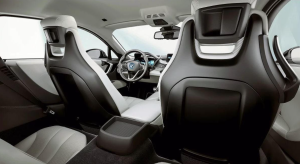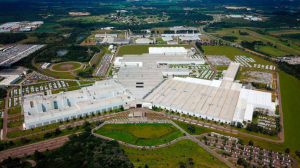Online shopping is becoming more and more popular among people worldwide and forecast trends show that in a few years, trade will be mostly mobile.
Until now, users used their mobile devices to search for information, today many of them shop mobile.
More and more people in our country are starting to trust this process. In 2020 online shopping has become a habit for 31% of online users in Bulgaria. Statistics show that over 1.6 million Bulgarian consumers have shopped online (BEA e-commerce Passport 2020).
The fact is that in the last few years trade has undergone a transformation . Technology and modern isolation conditions have encouraged businesses that have only physical stores to be online. Global trends show that e-commerce will continue to grow expansively next year.
And in this regard, the most common way to interact with customers is through visual content. Because, engaging all the senses of consumers, digital reality is closer to physical.
Technology as an opportunity to build visual representation and brand identity
Product images are part of the set of visual components that help the brand to stand out from other competitors, to be remembered, to form consumer perceptions. The visual style and quality of product photos is from essential for engaging attention and attracting customers.
Also, whether consumers order online or visit the physical store, they will first have to do a virtual survey of what they are looking for. Therefore, every online retailer should constantly aim to improve the user experience.
And when looking for new and original techniques, there is a process of constant development and creation of trends. It is no coincidence that with the evolution of digital technology, product photography has moved to other levels.
Only a few decades ago, photographers used tape cameras, and today the joint work of innovative computer specialists, talented designers – artists and professional photographers has contributed to rapid development of the whole photo industry.
Software development is so advanced that we are able to view products, furniture, interiors, cars with 360-degree photos. To scale the details, to rotate, to change the color variations.
And all this digitally, from our own mobile device and the comfort of our home. Of course, photographers also boast a wide range of advanced editors to make their work easier and better.
But won’t the technological future throw product photography into a corner?
This is a question that many have been asking for a long time and which is really difficult to answer, because there are already so many innovations in this field that have sprung up in just a few years. . So we can hardly imagine how far we will go in the future.
For example, face recognition in Adobe is already so advanced, that he can easily select persons from all angles or locate some particular characteristic of specific persons for the application of manipulation.
Even modern cameras like Sony a7 III have facial recognition . However, let’s note that the launch of this particular model was in the distant 2018, and Sony fans are already waiting for the newer version of Sony A7 IV, which is expected in December 2021
Of course, things don’t stop there. Today we can get an innovative, fully automated, modular, hardware-software system for creating interactive virtual reality in 3D form t and 360 ° etc. product presentations.
There are also automated product photography solutions with integrated cameras and control of flash, motorized turntables, instant capture buttons, barcode scanning, ready-made photo session settings templates, etc.
Processing software also runs fast and doesn’t miss some key stages in product photography. And although a high standard is sought, and implementation usually requires more time, we will not be surprised if we hear about a new one soon, powerful software that is able to cope with routine tasks in post-processing and retouching.
What else can we expect from new technologies in product photography in the future?
Recently, commercial photography has increasingly seen the stubborn placement of 3D imaging , which is becoming a permanent practice of leading industries.
Here is a specific example in which the British brand Geckota briefly, clearly and extremely original presents one of his collections with watches.
View this post on Instagram
Similarly, in real estate photography, cameras and pairing software allow a person to walk around the house to capture the interior, location and all the details, and finally the software processes the data in 3D visualization.

Images: KALMAN & amp; PABST PHOTO GROUP

Photo: trgmultimedia
The rise of computer-generated visualization of products has already conquered leaders in more than one industry. Industries such as the design and manufacture of furniture and furnishings have long achieved flexibility in their work, using innovation on a large scale.
In order to achieve more operational achievements and value, they invest digitalization in many of the stages, through which their entire production process passes. Of course, this doesn’t go unnoticed by product photography needed for marketing purposes.
CGI product photography is the use of computer-generated images to create a hyper-realistic “snapshot” of a product.

Photo: trgmultimedia

Images: KALMAN & amp; PABST PHOTO GROUP
CGI technology is evolving and advancing, especially in recent years. And as its price continues to fall, many companies are already using CGI photography to create stunning product visualizations of their range.

Waterproof Key Case by Tim Cooper
The end result is good and realistic enough. And it’s no wonder that this type of visualization has become a natural successor to traditional product photography. Quite objectively, we can say that it finds a place in the future of online commerce.
However, at this stage there is some uncertainty in some of the CG scenes. Especially since the line between heavily photoshopped photography and CG visualization is very thin.

Photo: trgmultimedia

BMW i8 Interior by Mostafa Zaki
web: BMW i8 Interior
Nowadays creating exciting content requires a lot more creativity. For example, a beautiful product image with a move, a dynamic element of the scene, will definitely arouse the interest of followers. And because social networks have become channels for direct sales, there we can find current and successful trends and techniques for presentation and advertising of brands:
Cinematography
Cinematographs are still images with smooth and repetitive action (animation) in some part of it. This style often surprises the user, maintains commitment and interest.
Imagine a steaming cup of coffee or a floral drop that slowly flows into a bottle of exquisite perfume. This may sound complicated to achieve, but cinematography technology is now available to everyone.
Authentic Images
They have the power to touch the heart of the audience. To immerse the viewer in the atmosphere of the story.
These are the photos that capture an outstanding moment, but at the same time they lack those effects – they do not look powdered and commercial, and therefore resonate somehow primarily with consumers. They have the extraordinary ability to create a reliable connection between the user and the product.

Photo: unsplash
 Photo: unsplash
Photo: unsplash
Bird’s eye view
Drone images and videos are becoming more popular , and more and more projects are using images with a bird’s eye view.
Often in product photography in industrial design there are shots of an industrial object from a bird’s eye view – factory, factory. This type of image is necessary for the presentation of the company on the site, as well as for advertising in electronic media. They are also suitable for construction and tourism .

Volkswagen in Sao Jose dos Piñas, Brazil
In many ways, it can be said that new technologies make it easier for photographers, but they can also displace them from business.
We are still at the beginning of the technological revolution and it seems that for now technology is in symbiosis with photography. And photography is above all a creative profession. It is unlikely that artificial intelligence will soon be able to completely replace man.
However, in the near future it is predictable that artificial intelligence will be able to create a photorealistic image or video, optimized for the psychology of the target audience, at the same time quickly and at a low price.
